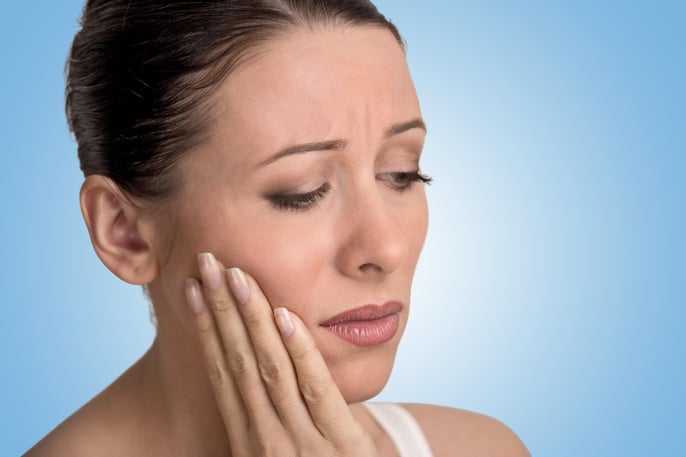
It may seem unlikely that damage to your jaw could cause migraine-type headaches, but since damage or injury to one area can cause physical tension that affects other areas, it’s not as surprising as it might first appear. Damage to the temporomandibular joints could, in fact, be contributing to your migraines.
What is TMD?
The temporomandibular joints are the ones joining the jaw to the skull on each side of your head. It’s a complex joint that allows you to chew, yawn and talk. The side-to-side and up-and-down movement capability of these joints is protected by small discs called condyles, which enable the jaw to glide smoothly within the sockets. Any disorder affecting the joint is called temporomandibular disorder or TMD.
When you have damage to this joint, which could be caused by daily wear or by trauma, the symptoms can include:
- Ear and facial pain.
- A clicking noise when the joint moves.
- Reduced range in opening the mouth.
- Tenderness in the jaw.
- Trouble biting or chewing.
- Jaw pain and headaches.
Some doctors believe a connection exists between TMD and fibromyalgia. The pain in the jaw caused by TMD is similar to the joint pain felt by fibromyalgia patients, and the two conditions often exist side by side. Aside from pain in the joints, there are other shared symptoms which include some frequently experienced by migraine sufferers, such as:
- Fatigue
- Difficulty balancing (often experienced as vertigo in migraine sufferers).
- Trigeminal neuralgia (which describes pain in the facial nerves).
- Speech or hearing difficulties.
- Altered sense of taste and smell.
LINKS BETWEEN MIGRAINE AND TMD
The University of Buffalo's School of Dental Medicine conducted a study into the possibility that TMD symptoms were being mistaken for tension headaches. The focus of the study extended to include migraine headaches and mixed migraines. More women than men took part, because temporomandibular disorders is more common among female patients.
By recreating the symptoms of a tension headache and clinical examinations of the temporomandibular joint, researchers found one condition is frequently misdiagnosed as the other. For the patient, this misdiagnosis can have the unfortunate result of not getting the correct treatment. TMD is treatable, but if you get treatment for a headache instead, your TMD problem will remain and the headaches will persist.
Separating TMD and Migraine
If you suspect you might be suffering from TMD, you could find a reduction in severity or frequency in migraine by tackling the TMD as a separate disorder. Here are some of the signs to watch out for:
- If you have a crackling or grinding sound or sensation when you move your jaw, you may have TMD.
- If the jaw joint feels stiff, and you have problems with opening and closing your mouth to its full extent, you may have TMD.
- Tenderness in the face or aches in your ears may also indicate a problem with your temporomandibular joint.
There are several strategies you can try to see if any ease the pain that comes from your jaw, such as:
- Giving up chewing gum, which can cause overuse of the jaw and lead to inflammation and stiffness. If keeping your breath fresh is your main reason for chewing gum, try sucking mints or using mouthwash instead.
- Learn to relax. Tension is often carried in the jaw without us realizing it. Take frequent breaks if work is stressful, become aware of when you’re clenching your jaw and deliberately relax it. Learning relaxation techniques or taking up yoga can also help reduce stress-based tension.
- Try massage. Sometimes gently massaging the jaw joint area can help ease tension and reduce inflammation.
- Take simple pain relievers. Over the counter pain relief is often all that’s needed to reduce pain, which can also reduce tension that might lead to more pain or headache if left untreated.
- Regularly stretch the neck and shoulders. These are two main areas that tense up when we’re feeling stressed.
The pain that comes from damage to the temporomandibular joint can mimic all kinds of headache, from sinus to cluster and on to migraine. Migraine and TMD symptoms may be related, and are often confused among the medical profession. The reason is partly because TMD symptoms are extremely diverse, and commonly produce migraine-like symptoms.
If you suffer from migraine headaches and your specialist care providers have never been able to accurately pinpoint the cause, it could be worth investigating the possibility of TMD. At the very worst, you will find there is no connection in your personal circumstances. But there is also the chance that TMD is contributing to your migraine pain, and treating this separate condition can reduce your migraine symptoms.


